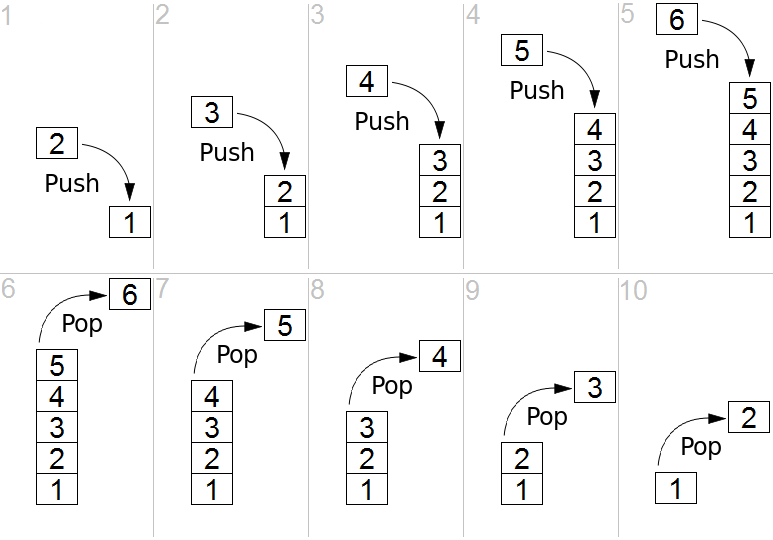Stack
Stacks are the result of approaching a LIFO (Last in, First out) ordering with list node connection behavior. This means that element inside the stack are connected like a list but are added and extracted approaching LIFO.
[1] Lifo stack | https://commons.wikimedia.org/wiki/File:Lifo_stack.png
Based on that, the to methods that a stack should have to be called that way are pop which remove the top element from the stack and returns it, and push which adds a new element on top of the stack.
Minimal methods to work with Stacks
- Pop
Java implementation of the pop method in an array based stack
public Object pop() {
if (!isEmpty()) {
Object object = array[top];
array[top--] = null;
return object;
} else {
return null;
}
}
As you see, after obtaining the element in top of the stack, it is immediately removed from it.
- Push
Java implementation of the push method in an array based stack
public boolean push(Object object) {
if (top + 1 < size) {
try {
array[++top] = object;
return true;
} catch (Exception e) {
System.out.println(e);
return false;
}
} else {
return false;
}
}
- Peek
In some circumstances the user may want to check the value stored in the top of the stack without removing it. In this scenarios is where peek method is useful, since it return the value without removing it from the stack. This way and extra push is not necessary.
Java implementation of peek in a Array based stack
public Object peek() {
return (!isEmpty()) ? array[top] : null;
}
Array and List based stacks
Example of an array based stack, of four elements. It will only receive four elements, if it reach it's max length, incoming values were not be added.
[2] Stack (data structure) LIFO | https://commons.wikimedia.org/wiki/File:Stack_(data_structure)_LIFO.svg
The mayor difference between an array based stack and one implemented using lists is that the first one is usually implemented with a static size, this means that it will only accept a specific number of element, the other one, will allow the user to add elements until memory is full.
References
| Identifier | Author | Source |
|---|---|---|
| 1 | Maxtremus | https://commons.wikimedia.org/wiki/File:Lifo_stack.png |
| 2 | Original uploader: FibiDerivative work: Marek M
|
https://commons.wikimedia.org/wiki/File:Stack_(data_structure)_LIFO.svg |








Top comments (5)
Can't understand. Can you elaborate @michaelcurrin .
Suggested correction for this sentence
Very cool nicely explained.
Thanks..